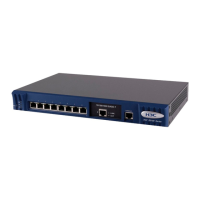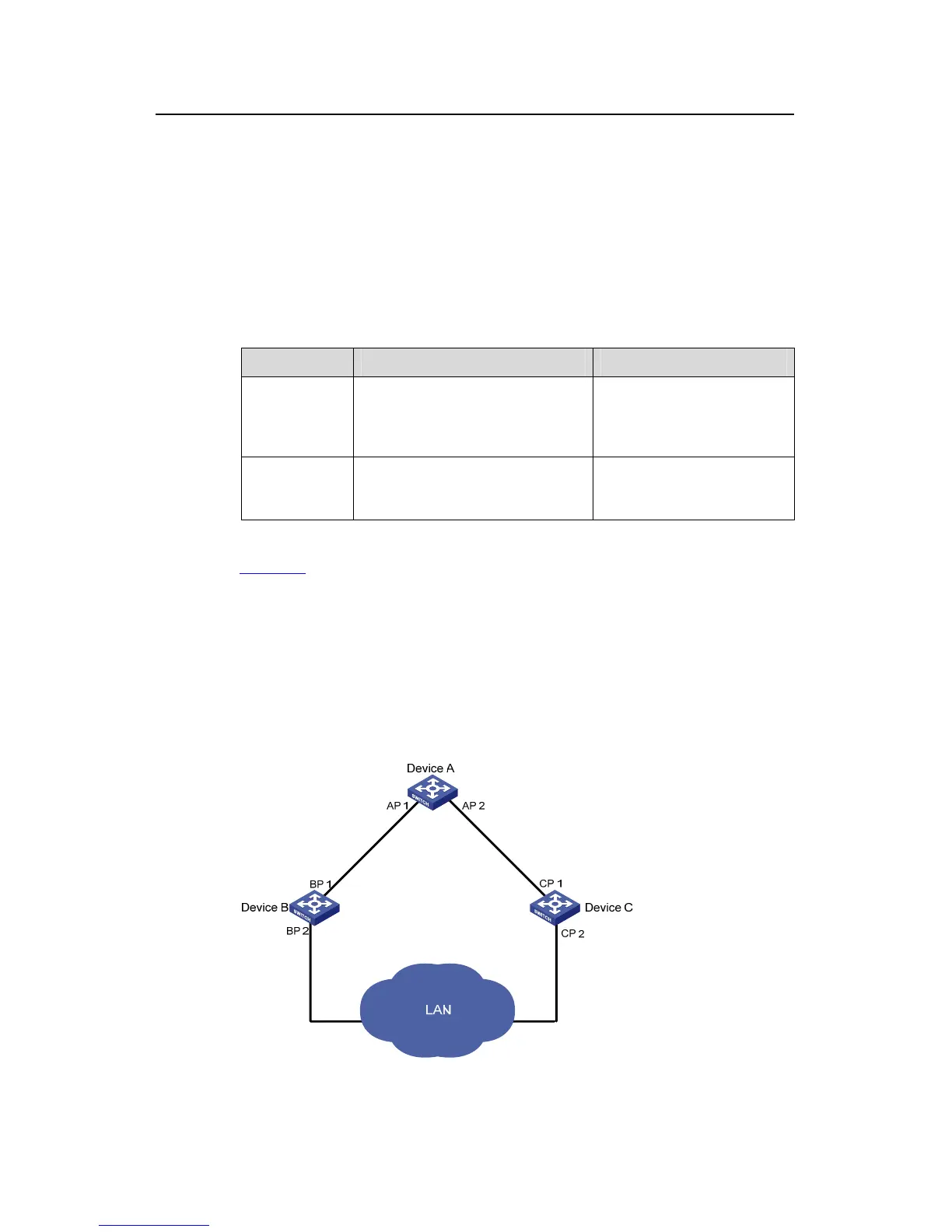Operation Manual – MSTP
H3C S3100 Series Ethernet Switches Chapter 1 MSTP Configuration
1-2
2) Root port
On a non-root bridge device, the root port is the port with the lowest path cost to the root
bridge. The root port is used for communicating with the root bridge. A non-root-bridge
device has one and only one root port. The root bridge has no root port.
3) Designated bridge and designated port
Refer to the following table for the description of designated bridge and designated
port.
Table 1-1 Designated bridge and designated port
Classification Designated bridge Designated port
For a device
A designated bridge is a device
that is directly connected to a
switch and is responsible for
forwarding BPDUs to this switch.
The port through which the
designated bridge forwards
BPDUs to this device
For a LAN
A designated bridge is a device
responsible for forwarding BPDUs
to this LAN segment.
The port through which the
designated bridge forwards
BPDUs to this LAN segment
Figure 1-1 shows designated bridges and designated ports. In the figure, AP1 and AP2,
BP1 and BP2, and CP1 and CP2 are ports on Device A, Device B, and Device C
respectively.
z If Device A forwards BPDUs to Device B through AP1, the designated bridge for
Device B is Device A, and the designated port is the port AP1 on Device A.
z Two devices are connected to the LAN: Device B and Device C. If Device B
forwards BPDUs to the LAN, the designated bridge for the LAN is Device B, and
the designated port is the port BP2 on Device B.
Figure 1-1 A schematic diagram of designated bridges and designated ports

